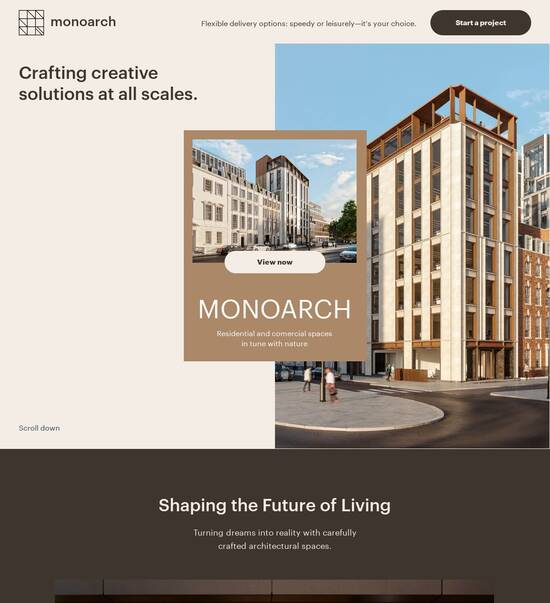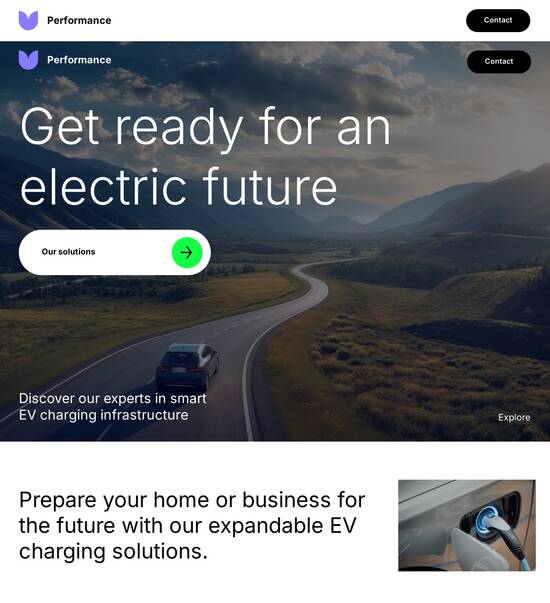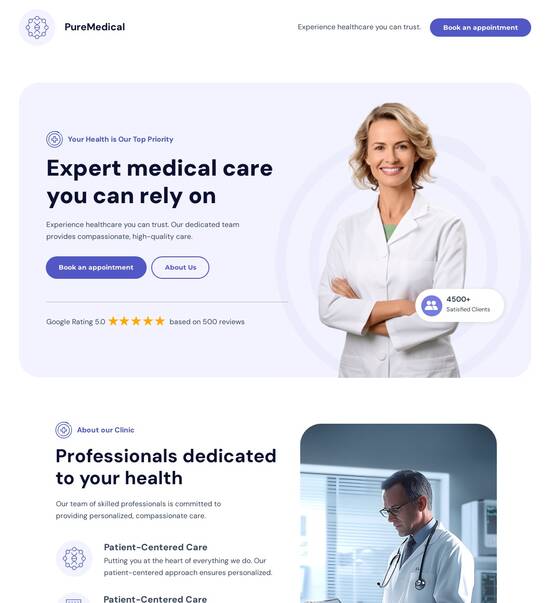
Simple Q&A website template
Explore Similar TemplatesAbout template
Drive more leads with Instapage simple Q&A website template built to maximize conversions. Easy customization - no designer or coding skills needed.
Recommended templates

Easy to build without coding
With the intuitive drag-and-drop builder, anyone on your team can create high-converting pages without any knowledge of code or design. Make enhancements to your landing page with custom widgets using Javascript, HTML/CSS, or third-party scripts.

Multiple layouts for any industry and goal
Select from 500+ landing page layouts built to boost conversions across industry-specific scenarios. Customize them by adjusting fonts, adding images, and generating on-brand content with the AI assistant. Quickly scale with Instablocks® and Global Blocks that you can save, reuse, and update globally.

Loads fast and looks polished on any device
Every template is responsive, which means they present professionally on any device and load blazingly fast with our Thor Render Engine. You can also power them up with Google AMP technology to deliver an unparalleled mobile experience and drive higher conversions.

Robust analytics & experimentation
Get real-time updates and reporting across all your devices, showing the number of visitors, conversions, cost-per-visitor, and cost-per-lead. Launch AI-powered experiments, run A/B tests, and use heatmaps to analyze user behavior, then optimize your landing page to maximize conversions.







Easy to build without coding
With the intuitive drag-and-drop builder, anyone on your team can create high-converting pages without any knowledge of code or design. Make enhancements to your landing page with custom widgets using Javascript, HTML/CSS, or third-party scripts.
Multiple layouts for any industry and goal
Select from 500+ landing page layouts built to boost conversions across industry-specific scenarios. Customize them by adjusting fonts, adding images, and generating on-brand content with the AI assistant. Quickly scale with Instablocks® and Global Blocks that you can save, reuse, and update globally.
Loads fast and looks polished on any device
Every template is responsive, which means they present professionally on any device and load blazingly fast with our Thor Render Engine.
Robust analytics & experimentation
Get real-time updates and reporting across all your devices, showing the number of visitors, conversions, cost-per-visitor, and cost-per-lead. Launch AI-powered experiments, run A/B tests, and use heatmaps to analyze user behavior, then optimize your landing page to maximize conversions.
All the features you need to build lead-generating landing pages
Explore more featuresLearn how to build top-performing landing pages for any goal
FAQs
Leading the way in building high-performing landing pages





A step-by-step guide to using Instapage for your digital marketing campaigns
Instapage stands out as the powerhouse of landing page and Conversion Rate Optimization (CRO) platforms, enabling marketers to enhance their digital strategies with agility and precision. This guide is crafted specifically for marketing professionals across various sectors including business services, tech, education, and more, focusing on how to maximize ROI through effective landing page creation.
Step 1: Choose the right landing page template
Selecting the right landing page template is crucial for a successful campaign. Instapage offers an extensive library of over 100 high-converting templates tailored for different industries and audience types. Each template is designed to optimize lead capture and enhance user experience. Consider these factors when choosing a template:
- Alignment with campaign goals: Ensure the template reflects the objectives of your marketing campaign.
- Design flexibility: Choose a template that allows for easy customization to match your branding.
- Responsiveness: Opt for templates that function seamlessly across devices to reach your audience effectively.
Step 2: Customize your landing page
Once you've chosen a template, it’s time for customization. Instapage’s intuitive drag-and-drop builder allows for straightforward modifications, making it user-friendly even for those without coding skills. Here’s how to optimize your landing page:
- Add personalized content: Utilize dynamic text replacement to cater specifically to each audience segment.
- Incorporate compelling visuals: Integrate high-quality images or videos that resonate with your target demographic.
- Include lead generation elements: Make sure to add forms, CTA buttons, and other interactive components that drive conversions.
Step 3: Optimize for conversions
With your landing page live, the next step is optimization for maximum conversion rates. Leverage Instapage's built-in tools for A/B testing and analytics. Here’s what to focus on:
- Implement A/B tests: Regularly test different headlines, layouts, and images to evaluate what drives higher conversions.
- Utilize heatmaps: Use heatmap analytics to understand user behavior on your page and make informed adjustments.
- Monitor performance metrics: Keep track of key performance indicators (KPIs) such as bounce rates, time on page, and conversion rates for continuous improvement.
Implementing these steps will not only enhance the performance of your landing pages but also contribute to the overall success of your marketing strategy. Stay adaptive by integrating feedback and results into your next campaigns.
With Instapage, you can accelerate your campaigns, optimize for better returns, and streamline your marketing efforts.
Ready to transform your digital marketing strategy? Start your free trial with Instapage today and unlock the potential of targeted landing pages!
People also ask about Simple Q&A website template
Understanding simple QA website templates for effective quality assurance
Understanding QA website templates: The backbone of quality assurance
QA website templates serve as essential frameworks designed to streamline the quality assurance processes within web development projects. These templates provide a structured yet flexible approach to managing testing efforts and ensuring that the final product meets specified standards. As digital content continues to proliferate, having a reliable QA template becomes increasingly critical to maintaining the integrity and functionality of websites.
Quality assurance in web development holds immense importance, as it not only helps in identifying flaws but also enhances user experience. A robust QA process can significantly reduce the likelihood of website crashes, broken links, or performance lags, which can deter users and harm a brand’s reputation.
QA templates help streamline testing processes.
They support better collaboration among team members.
These templates contribute to consistent quality checks.
Quality assurance engineers play a pivotal role in this framework, ensuring that each website iteration adheres to best practices. They are responsible for meticulously coordinating various testing activities, gathering and analyzing critical data, and collaborating with developers to enhance overall site performance.
Core features of a simple QA website template
Simple QA website templates typically encompass several core features that enhance their usability and effectiveness. One of the most crucial features is the user-friendly interface, which ensures that both technical and non-technical users can navigate the testing process with ease. An intuitive design coupled with straightforward navigation promotes user engagement and reduces learning curves.
Intuitive design for easy navigation.
Customization options for enhanced user experience.
Integrated testing capabilities form another key component, allowing teams to conduct various tests seamlessly. These can include functional testing to verify that features perform as intended, performance testing to ensure that the website can handle high traffic loads without slowdown, and usability testing to gauge user satisfaction.
Functional testing.
Performance testing.
Usability testing.
Furthermore, built-in error tracking mechanisms are crucial for early detection and resolution of potential issues. These features aid QA engineers by highlighting bugs, providing insights into where problems occur, and facilitating the tracking of progress on fixes and improvements.
The benefits of utilizing a simple QA website template
Utilizing simple QA website templates brings substantial benefits to businesses aiming to enhance their online presence. One of the most significant advantages is improved business performance. A high-quality website that functions well will lead to increased user satisfaction, potentially converting visitors into loyal customers. This positive experience can result in lower bounce rates, higher engagement, and ultimately better conversion rates.
Improved website quality enhances user satisfaction.
Reduction in downtime and errors leads to higher productivity.
Moreover, investing in quality assurance through these templates is a cost-effective solution. By reducing the need for extensive rework, teams can save time and resources that would otherwise be spent addressing issues after they arise.
In addition, simple QA website templates facilitate a streamlined workflow for QA engineers. With built-in project management tools and collaborative features, teams can work together efficiently, ensuring that all aspects of the project are on track and meeting deadlines.
Designing for success: The art of painting a QA website template
When designing a QA website template, aesthetic considerations play a pivotal role in enhancing functionality. An effective color scheme and layout can greatly improve clarity. Visual hierarchy guides users toward important features, making it easier to identify critical issues during testing periods. Additionally, responsive design ensures that the template performs well on all devices, thereby improving accessibility for all users.
Color schemes should promote clarity and avoid conflict.
Responsive design is essential for usability on various devices.
Incorporating branding into QA templates is equally important. Customizable elements allow teams to create templates that reflect their brand identity while maintaining consistency across all testing documents. By carefully integrating branding, teams can ensure that all stakeholders recognize the quality assurance efforts as part of the broader organizational goals.
Performance indicators: Measuring website quality with QA templates
To assess the effectiveness of QA website templates, it’s essential to establish clear performance indicators that reflect website quality. Load times and performance benchmarks are crucial metrics to understand, as users expect websites to load quickly. Slow loading times can lead to user frustrations, resulting in higher abandonment rates.
Load times should meet or exceed industry standards.
User engagement statistics provide insights into usability and satisfaction.
Analyzing results across multiple iterations reflects ongoing improvements. Leveraging data collected from testing processes allows teams to identify trends and make informed decisions. Importantly, user feedback can drive necessary adjustments, fostering a culture of continuous improvement within the organization.
Setting yourself up for success with a QA website template
Once a simple QA website template has been selected, the initial setup and configuration become key to maximizing its potential. A step-by-step guide should be created to aid in deploying the template effectively. Ensuring that all essential configurations are in place is often the foundation for optimal performance and seamless collaboration.
Follow a step-by-step guide for template deployment.
Essential configurations should be set prior to testing.
Ongoing maintenance is equally critical. Regular updates and quality checks ensure that the template remains up-to-date with the latest trends and technologies. Creating a culture of continuous testing within development teams encourages proactive measures in addressing issues before they escalate.
Furthermore, to future-proof QA strategies, organizations should stay abreast of emerging trends in internet technologies. Understanding how evolving user needs and expectations impact website quality is vital for maintaining competitiveness.
Real-world applications of simple QA website templates
Examining case studies can provide valuable insights into the real-world applications of simple QA website templates. Many organizations across various industries have successfully implemented these templates, streamlining their quality assurance processes. For instance, a well-known e-commerce site utilized a QA template to manage its user interface testing, which resulted in improved navigation and enhanced user satisfaction.
Example from the e-commerce industry highlighting improved UX.
A tech company’s use of QA templates for efficient handling of user feedback.
Additionally, comparing traditional QA approaches with template-based strategies reveals distinct advantages. Template-based QA often reduces miscommunication and ensures that all team members are aligned with the project goals, ultimately enhancing collaborative efforts.
Overcoming challenges in website quality assurance with templates
Quality assurance processes are not without their challenges. Common hurdles include miscommunication between teams, which can lead to inconsistencies during testing phases. Difficulty in identifying performance bottlenecks can also pose significant issues; however, simple QA website templates can effectively address these challenges.
Built-in communication tools enhance collaboration.
Simplified reporting and analysis features aid in quick identification of issues.
By incorporating effective communication mechanisms and streamlined reporting processes, templates ensure that teams can focus on their core objectives without unnecessary delays. This leads to a more integrated quality assurance strategy, aligning all efforts towards delivering a superior website.
The future of QA website templates
As technology evolves, the landscape of QA and website quality assurance processes will undoubtedly change. Emerging technologies, such as artificial intelligence and automation, are beginning to impact QA processes significantly, streamlining testing significantly while also enhancing accuracy. These innovations have the potential to redefine the standards of quality assurance, emphasizing the importance of adaptability.
Emerging technologies will transform QA processes.
Adapting to change will be essential for QA engineers.
The role of QA engineers will continue to evolve alongside these advancements. Future requirements may demand different skill sets and areas of expertise, leading to opportunities for growth and continued learning within this dynamic field. Professionals must continuously engage with new practices and tools to excel in their roles.
Crafting your ideal simple QA website template: Tips and tricks
When crafting the perfect QA website template, identifying the right features is essential to align with business needs. Organizations should assess their specific requirements and determine which functionalities will truly enhance their QA processes. Customizing the template not only helps in meeting objectives but also ensures that the QA efforts reflect the brand's identity.
Identify the features most relevant to your QA processes.
Customize the template to align with specific business objectives.
Engaging with the community is another effective way to refine templates. Gathering feedback from peers and stakeholders can illuminate areas for improvement, ensuring that QA teams are always equipped with the best tools available for high-quality website assessment.
Ready to skyrocket conversions?
Supercharge your ad campaigns with high-performing landing pages
Get started














